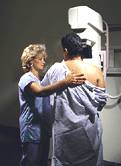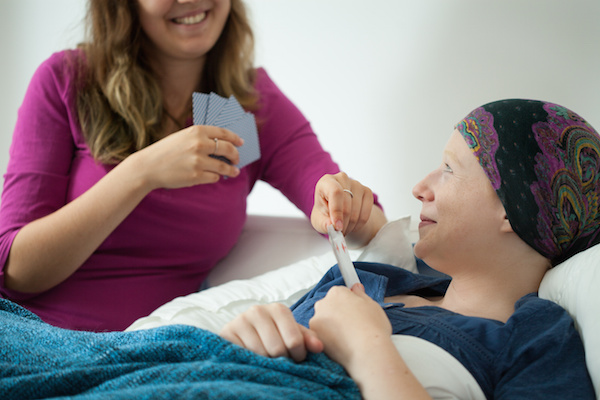
WEDNESDAY, Nov. 24 (HealthDay News) — Although screening tests are widely available, many cancers aren’t diagnosed until the disease is well-advanced and, therefore, less treatable, a new U.S. government report finds.
Almost one-half of colorectal cancers and cervical cancers and one-third of breast cancers in the United States are detected at a late stage, according to the report released Wednesday by the U.S. Centers for Disease Control and Prevention.
Yet, if caught early, these three cancers have very high survival rates.
“People need to be aware of what they need to have done medically and follow-up with their providers,” said report co-author Dr. Lisa Richardson, associate director for science in CDC’s Division of Cancer Prevention and Control.
For the study, the researchers examined data collected from 2004 to 2006 from the CDC’s National Program of Cancer Registries; the U.S. National Cancer Institute’s Surveillance, Epidemiology, and End Results Program; and the CDC’s Behavioral Risk Factor Surveillance System.
“For me, the most important point is to look at how different the rates of advanced-stage cancer are in different parts of the country,” said Dr. Marc Lippman, chair of the department of medicine at the University of Miami Miller School of Medicine and deputy director of the university’s Sylvester Comprehensive Cancer Center, who was not involved in the report.
The differences reflect socioeconomic status and access to care, he said. “What this tells you is that a lot of cancer deaths are preventable, and those skill-sets to prevent deaths are being applied unequally across the country,” Lippman explained.
Louisiana, Mississippi and Oklahoma, for instance, had higher rates of late-stage cancers than many other states.
Lippman said he thinks too few insurance companies pay for preventive care, and noted that vast differences exist in access to quality care.
Some people are afraid of screening and some doctors don’t even discuss cancer screening with their patients, Lippman noted.
“Many people have a fatalistic view of cancer, which is unfortunate, because many cancers, if detected early, have dramatically better survival with dramatically less treatment,” Lippman said.
Other findings in the report include:
- Rates of late-stage colorectal cancer increase with age and are highest among black men and women.
- Women aged 70 to 79 and black women were most likely to have breast cancer detected at a late stage.
- Rates of late-stage cervical cancer were highest among women aged 50 to 79 and Hispanic women.
- States with the highest rates of late-stage colorectal cancer are Connecticut, Delaware, Illinois, Iowa, Kentucky, Louisiana, Maine, Nebraska, New Jersey and Pennsylvania.
- Rates of late-stage breast cancer incidence were highest in Alabama, the District of Columbia, Kansas, Louisiana, Mississippi, New Jersey, Oklahoma, Pennsylvania, Tennessee and Washington.
- For cervical cancer, rates of late-stage diagnosis were highest in Arkansas, the District of Columbia, Illinois, Kentucky, Louisiana, Mississippi, Nevada, New Mexico and Oklahoma.
“This report causes concern because so many preventable cancers are not being diagnosed when treatment is most effective,” Dr. Marcus Plescia, director of CDC’s Division of Cancer Prevention and Control, said in a statement Wednesday.
“More work is needed to widely implement evidence-based cancer screening tests, which may lead to early detection and, ultimately, an increase in the number of lives saved,” he said.
Screening recommendations include:
- Men and women 50 to 75 years old should get screened for colon cancer with a fecal occult blood test every year, a flexible sigmoidoscopy every five years, or a colonoscopy every 10 years.
- Women 50 to 74 years old should be screened for breast cancer with mammography every two years.
- Pap tests to screen for cervical cancer should begin within three years of becoming sexual active or at age 21, whichever comes first. Initial screening should be annual, and after three consecutive normal tests at least every three years up to age 64.
“People need to take advantage of the fact that we do have these screening tests that have been shown to lower mortality and lead to earlier-stage diagnosis,” said Richardson.
By eliminating financial barriers to cancer screenings, such as co-pays, the new Affordable Care Act offers an important first step to increasing the number of people who receive these services, the CDC said.
More information
For more information on cancer screening, visit the CDC.

